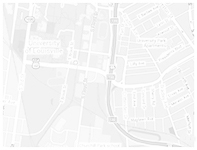Using LinkedIn Pt. 2
USING LINKEDIN TO ITS FULLEST POTENTIAL
By Stuart Esrock, Ph.D.
LinkedIn has become an important online tool in the professional world. Founded in 2002, there are now nearly 600 million global users including 130 million+ in the United States, as well as 30 million companies. More than 100 million people access the platform each day to make connections and to look into job and internship opportunities.
With that ubiquity, it’s imperative that students who will be looking for an internship or full-time job get a LinkedIn account if you don’t already have one. And, you also need to make sure your LinkedIn account takes advantage of the platform to its fullest potential. Now, while we are all on lockdown in our homes, it is a great time to do some work on your LinkedIn account and experts have a number of tips for you in that regard.
First and foremost, keep in mind that you are a brand of one. Everything you have in your LinkedIn profile is a reflection of you and helps to build your brand. So think about what overall image you want to convey about yourself to those reading your profile and then be sure that everything in your profile goes toward building your brand.
As you build or make changes to your profile, remember that it is important to have a good photograph. Why is that photo important? We’re told that LinkedIn profiles with photos get 21 times more views and 36 times more messages than profiles without photos. As opposed to some social media photos that are overly glamorized, make sure your LinkedIn photo looks like you if someone were to meet you in person. Be the only person in the photo and make sure you don’t have a distracting background. Ideally, you want a head and shoulders shot that constitutes the majority of the image. A smile is desirable over a serious shot. And while you don’t have to use a “professional” photo, don’t rely on a selfie; have someone take the picture of you for use in your profile.
Your LinkedIn headline is also crucial since that’s the first thing someone will likely read. Highlight what makes you unique and helps to sell you to the reader. It’s like your elevator speech, boiled down to 120 characters.
As is the case with resumes, start sentences and phrases with action-verbs. Using phrases like “developed,” “started,” “implemented,” “analyzed,” “managed,” etc. subtly communicates a positive message that reflects well on your brand.
Make sure your education section is complete. Failure to complete this section can raise red flags, as can overly grandiose language that raises suspicions about you possibly overstating your credentials. Be honest and straightforward, but do take credit for what you’ve done.
In that regard, the activities and work you have done at your university and in your community says important things about you and potentially reflect well on your brand. Don’t be shy about these experiences - they may also help you to make a connection with an individual who has similar interests or experiences.
It is appropriate to post specific work to your LinkedIn profile that may show special talents you have. Design work, photography, videography, and audio skills, for example, may be relevant to the message you are trying to convey to potential employers and contacts.
Once you have built your profile to best reflect your brand, you’ll want to make connections via LinkedIn. To increase your connections, select “Full Profile” for Profile Viewing Options under the Privacy tab. When trying to network with individuals, always send a brief invitation to connect that is tailored to that person. Include information about who you are, what you have in common, and why you want to connect.
As a UofL student, you have a unique opportunity to connect on LinkedIn with thousands of fellow Cardinals who are now alums. You will find that common UofL linkage means it is more likely you will receive a favorable response to your attempts to connect. To search for alumni on LinkedIn, type “University of Louisville” in the search box and then click on “alumni” to move to the next page. You can view alumni by where they live and work, what they studied and what they currently do.
Once you connect via LinkedIn, be considerate of your contact’s time. Be brief and don’t overwhelm that individual with repeated messages. Be patient when waiting for responses. Be polite and appreciative of any advice they can offer. And remember that you asked to connect with them so be prepared to ask questions like:
- How did you get started?
- What’s your typical day like?
- What do you like/not like about what you are doing?
- What classes do you think I should be taking?
- Do you have any suggestions on any groups or individuals I should be connecting with?
With some fine-tuning of your profile and practice, you can make LinkedIn an important tool as you enter the job market, and later as you advance your career. For more tips and advice on using the platform, LinkedIn Higher Education has several articles. Also, read our first article on Using LinkedIn.
And you can always talk about LinkedIn with your UofL career center - find the center for your academic program.

